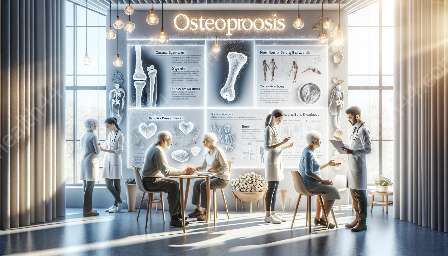Osteoporosis is a common bone disease characterized by low bone mass, deterioration of bone tissue, and increased risk of fractures. It is a health condition that primarily affects older adults, particularly women. However, it can also occur in men and younger individuals due to various factors.
Causes of Osteoporosis
Osteoporosis develops when the creation of new bone doesn't keep up with the removal of old bone. Several factors can lead to this imbalance, including:
- Hormonal Changes: Reduced estrogen in women and decreased testosterone in men can lead to bone loss.
- Age: As people age, their bones tend to become less dense and weaker.
- Family History: Individuals with a family history of osteoporosis or fractures may be at higher risk.
- Dietary Deficiencies: Lack of calcium, vitamin D, and other nutrients crucial for bone health can contribute to osteoporosis.
- Physical Activity: Sedentary lifestyle and lack of weight-bearing exercise may result in weaker bones.
- Back Pain: Caused by fractures or collapsed vertebrae.
- Loss of Height: Compression fractures in the spine can lead to a noticeable decrease in height.
- Fractures: Easily occurring fractures, particularly in the hip, wrist, or spine, can indicate weakened bones.
- Bone Density Testing: Dual-energy X-ray absorptiometry (DXA) scan measures bone density and assesses the risk of fractures.
- Laboratory Tests: Blood and urine tests can identify underlying conditions contributing to bone loss.
- Medications: Bisphosphonates, hormone-related therapy, and other prescription drugs can strengthen bones and reduce fracture risk.
- Calcium and Vitamin D Supplements: These supplements support bone health and help maintain bone density.
- Physical Therapy: Exercises and activities designed to improve balance, posture, and bone strength.
- Adopting a Healthy Lifestyle: Incorporating a balanced diet, regular exercise, and healthy habits can promote bone strength.
- Limiting Alcohol and Caffeine: Excessive consumption of alcohol and caffeine can negatively impact bone density.
- Ensuring Adequate Calcium Intake: Consuming calcium-rich foods or supplements can help support bone density.
- Regular Bone Density Testing: Routine screening can monitor bone health and guide treatment decisions.
Symptoms of Osteoporosis
Osteoporosis is often referred to as a silent disease because it progresses without noticeable symptoms until a fracture occurs. Some warning signs may include:
Diagnosis and Screening
Early detection of osteoporosis is crucial in preventing fractures and managing the condition effectively. Common diagnostic methods include:
Treatment Options
While osteoporosis cannot be cured, several treatments aim to slow down bone loss, prevent fractures, and manage pain. Treatment options may involve:
Preventive Measures
Effective osteoporosis management also involves preventive strategies to maintain bone health and reduce the risk of fractures, such as:
Conclusion
Osteoporosis is a serious health condition that requires proactive management to maintain bone health and prevent complications. By understanding its causes, recognizing symptoms, following treatment options, and implementing preventive measures, individuals can take control of their bone health and reduce the impact of osteoporosis on their lives.















































